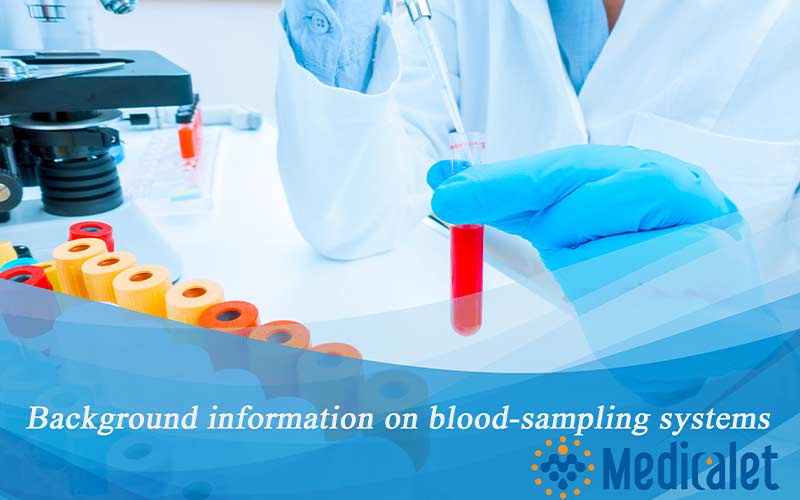WHO Guidelines on Drawing Blood: Best Practices in Phlebotomy.

Background information on blood-sampling systems
1. Closed systems
Closed systems for blood sampling are preferable because they have proven to be safer than open systems .
Needle and syringe
The use of a hypodermic needle and syringe is the most common means of blood sampling.
Choice of gauge
If the needle is too large for the vein for which it is intended, it will tear the vein and cause bleeding (haematoma); if the needle is too small, it will damage the blood cells during sampling, and laboratory tests that require whole blood cells, or haemoglobin and free plasma, will be invalid.
Blood collection for transfusion requires a larger gauge than is used for blood drawing.
Vacuum extraction systems
The use of vacuum extraction tube systems as closed systems for blood collecting reduces the risk of direct exposure to blood and has made it easier to take multiple samples from a single venepuncture.
Vacuum extraction systems are widely available in most well-resourced countries. These are recommended, but users should check their own country's recommendations. Although vacuum extraction systems are safe, training and skill is required for their use.
Double-ended needles are available in several recommended gauge sizes. The end covered by a rubber cuff is screwed into the barrel (also known as the tube holder, evacuated tube needle holder or bulldog). A thread separates the two ends, and this is where the barrel is screwed into place. The barrel holds the sample collection tube in place and protects the phlebotomist from direct contact with blood. The sample tube is under vacuum. Once the needle is in the vein, the tube is pressed on to the needle and the blood is drawn automatically into the sample tube by vacuum until the required amount is collected. This system comes complete with needle, barrel and the laboratory sample tubes with appropriately coloured tops for different types of samples. Tubes for adult and paediatric specimens are available.
Discard the barrel and syringe as a single entity where possible. If there is a need to reuse the barrel, use a one-hand scoop technique (Annex G) to cover the sharp end of the needle and thus to safely remove the needle from the barrel. Alternately, use a sharps container with a needle removal hold, again employing a one-handed technique.
Some systems have a mechanism that can be activated once the needle has been used; the mechanism retracts the used needle into the barrel and snaps it shut. Others have a quick-release mechanism to dislodge the used needle into the sharps container.
Vacuum systems may also be used with a winged butterfly needle and luer-lock connectors. Winged butterfly needles are also available with safety-engineered devices.
The sharps container must be within arm's reach and clearly visible, to ensure safe disposal of sharps.
2. Open systems
Open systems include hypodermic needle and syringes, as well as winged steel needles attached to a syringe.

Years of experience in manufacturing laboratory consumables and medical products enables Medicalet to provide products of the highest quality and competitiveness. Through continuous innovation and practice, Medicalet has been recognized by more and more customers. If you are interested in Medicalet blood collection equipment, please feel free to contact us!
